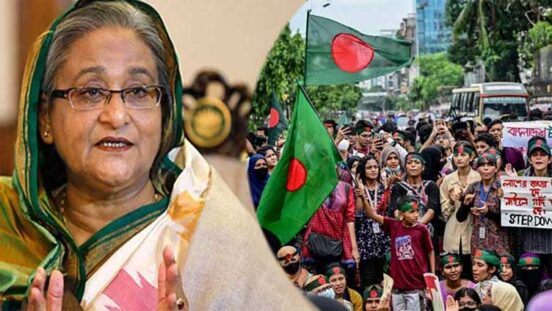By Ahsan Ansari
Sheikh Hasina, the daughter of Sheikh Mujibur Rahman, Bangladesh’s founding leader, has been a towering figure in the nation’s political scene for decades. Her journey in politics began in the aftermath of the tragic assassination of her father and most of her family members in 1975. Following years of exile, she returned to Bangladesh in 1981 and took up the mantle of leadership as president of the Awami League, the party established by her father.
Her first significant political triumph came in 1996 when she led the Awami League to victory in the general elections, thus becoming Bangladesh’s Prime Minister for the first time. Her administration focused on improving the country’s economic performance and infrastructure, but her tenure was also marred by political instability and allegations of corruption.
After losing the 2001 elections, Hasina made a political comeback in 2009, following a period of military-backed caretaker governance. From 2009 onwards, her leadership was characterized by remarkable economic growth and ambitious development initiatives, including major infrastructure projects and social programs. Her government sought to enhance relationships with neighboring countries and attract foreign investment.
Hasina’s Awami League secured wins in subsequent elections in 2014 and 2018, though these victories were overshadowed by allegations of electoral fraud and repression of opposition parties. Despite these criticisms, her government retained power by capitalizing on economic successes and implementing policies focused on poverty reduction.
The downfall of Sheikh Hasina’s government in 2024 was triggered by widespread unrest and growing dissatisfaction with her administration. In June 2024, protests erupted over a controversial public sector job quota system, quickly evolving into a larger movement against Hasina’s perceived authoritarianism and alleged corruption.
These protests were led mainly by students and youth groups, expressing deep frustration with government policies and a lack of democratic freedoms. As violence spread and clashes with government forces intensified, the situation became increasingly untenable. The rising death toll drew significant international attention and demands for Hasina’s resignation.
On August 5, 2024, the Bangladeshi military, led by Army Chief General Waker-Uz-Zaman, intervened by announcing the formation of an interim government. This military decision to side with the protesters marked a critical turning point, resulting in Hasina’s resignation and eventual departure from the country.
Sheikh Hasina’s political career is a testament to her resilience and her ability to navigate Bangladesh’s complex political landscape. Her rise to power was marked by substantial achievements in economic growth and social development. However, her fall highlighted the difficulties of maintaining democratic governance amid accusations of authoritarianism and electoral malpractice. The events leading to her resignation underscore the volatile nature of Bangladeshi politics and the enduring demand for democratic reforms.




